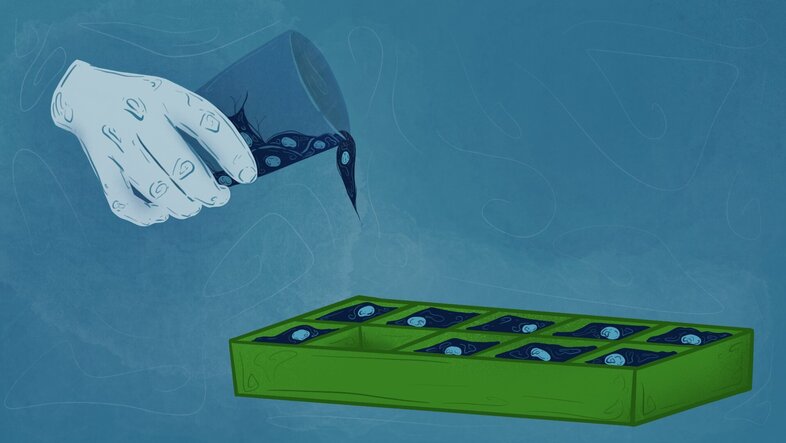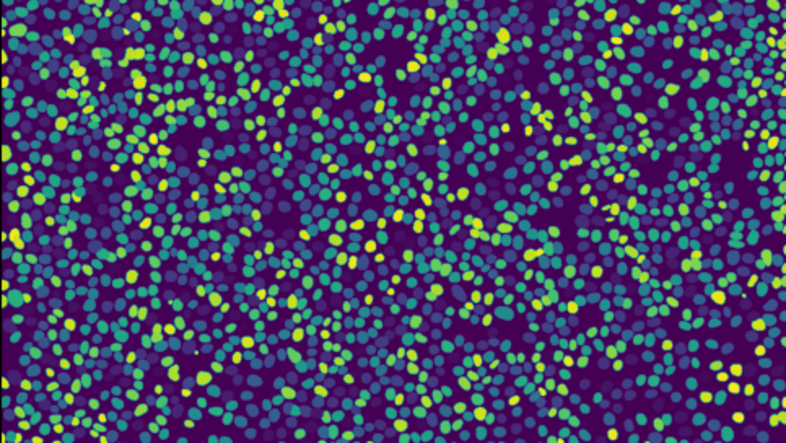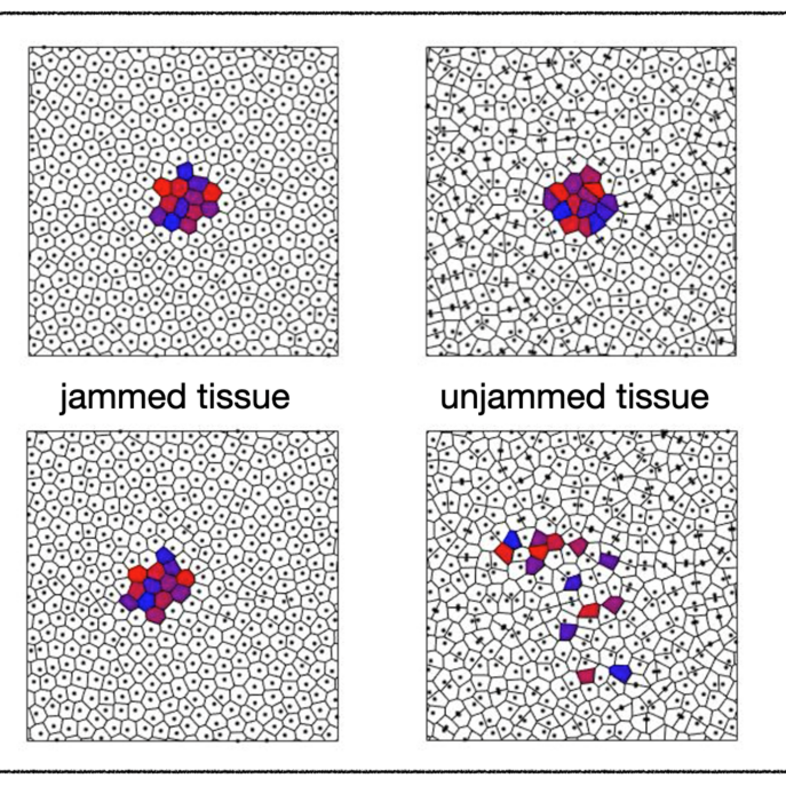Cell tissue: The complex machinery of life
Once upon a time... Life - The cell planet (1986)
The episode starts with the accruement of the universe. Glowing lava comes out of fire-spitting volcanoes into boiling water with thunder and lighting. In this primordial ooze, the very first cell appears - the prototype of all life. A journey into the inside of a cell guides viewers to chromosomes and ribosomes, mitochondria and the cell nucleus. Watch the video
Rudolphina: Why is cell tissue a material, and why is it interesting for you as a physicist?
Cerbino: Cell tissue is considered a material because it exhibits specific physical properties (e.g. elasticity, viscosity and tensile strength) that can be quantified and manipulated, much like any other material. These properties and the accompanying phase transitions (e.g. jamming and unjamming; see figure below) make cell tissue not just a biological construct, but also a material that can be studied using the tools of physics.
Rudolphina: Which three words describe cell tissue best?
Cerbino:
Dynamic: Cell tissue is always changing – with new cells replacing dead ones – and in a state of perpetual activity at all spatio-temporal scales, from the human scale down to the subcellular level.
Resilient: It can withstand considerable stress without dramatic consequences.
Smart: It possesses inherent capabilities to adapt, self-regulate and respond to external stimuli, and enact actions (e.g. repair itself) to maintain the integrity of the organism.
Rudolphina: Why should we know about cell tissue?
Cerbino: Knowledge of cell tissue is essential for advancements in healthcare, from developing treatments for diseases to understanding the ageing process. In addition, issues like cloning and genetic engineering involve cell tissue, making it vital for ethical debates and decision-making.
Rudolphina: What is the superpower of cell tissue?
Cerbino: I believe that the superpower of cell tissue lies in its behaviour as a smart soft material with amazing self-organisation and regenerative potential. The problematic aspect is that we still do not know how to replicate these smart materials in the lab.
Knowledge of cell tissue is essential for advancements in healthcare, from developing treatments for diseases to understanding the ageing process.Roberto Cerbino
Rudolphina: Does cell tissue still have some puzzling sides to it?
Cerbino: Despite advances, there are still many things that we do not understand about cell tissues. For example, we still have much to understand about the way in which tissues control their mechanical properties to accomplish functions, such as wound healing and embryogenesis. When these control mechanisms do not work as they should, pathological conditions can occur.
Rudolphina: Where do you see the future of cell tissue?
Cerbino: If ongoing efforts to decipher, control and mimic the working principles of cell tissues succeed, we can imagine a future with almost infinite applications. For instance, we could replace damaged organs and tissues, test drugs more ethically, augment human body performances and control diseases. We are still very far from reaching many of these goals, but we have made giant leaps, in large part thanks to interdisciplinary research in the field.
Rudolphina: What specific questions concerning cell tissue are you and your team currently addressing?
Cerbino:
My research team is currently exploring the interplay between the physical properties of a tissue and its biological function. In particular, we focus on understanding how the mechanical properties of a tissue, such as its elasticity or viscosity, and the collective behaviour of cells can be relevant in understanding and controlling cancer invasion and metastasis.
In fact, the concepts of jamming and unjamming (concepts typical of inert materials) in cell tissues have recently gained attention for the study of cancer. In a jammed state, cells within a tissue are tightly packed and exhibit solid-like behaviour, restricting movement. In contrast, unjamming transitions the tissue into a fluid-like state, allowing cells to move more freely. This unjamming is often observed in cancerous tissues, enabling cancer cells to invade surrounding tissues and metastasise, proving that cells can control the underlying physics.
Rudolphina: What would you like to achieve with your research?
Cerbino: Our vision is twofold. First, we aim to understand how cells and tissues sense and respond to mechanical forces across different spatial and temporal scales. This is a central question with significant implications in biology. Achieving this understanding would enable the systematic and informed design of artificial tissues and provide critical insights into medical conditions, such as tumor metastasis. Second, we want to explore the unique, dynamic and complex nature of living tissues to learn new physical laws that are fundamentally different from those governing inert materials at equilibrium.
Rudolphina: What could be the areas of application for artificial tissues outside of medicine, could there also be areas of application in technology or other areas?
Cerbino: This is hard to predict at 360 degrees. However, lab-grown meat or bio-fabricated leather can be considered a form of artificial tissue, and there are several companies working on creating artificial meat and leather that can be customised for specific attributes thus offering a sustainable and animal-free alternative to traditional meat and leather.


